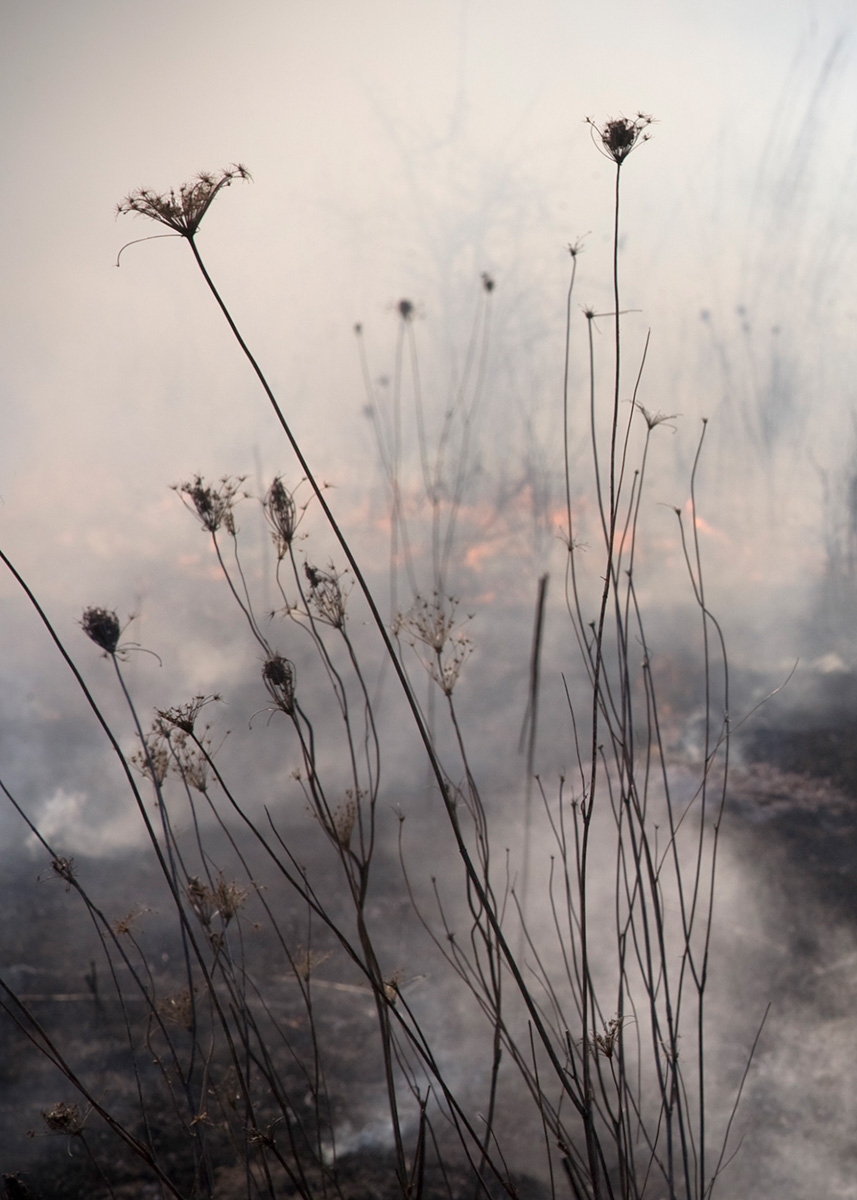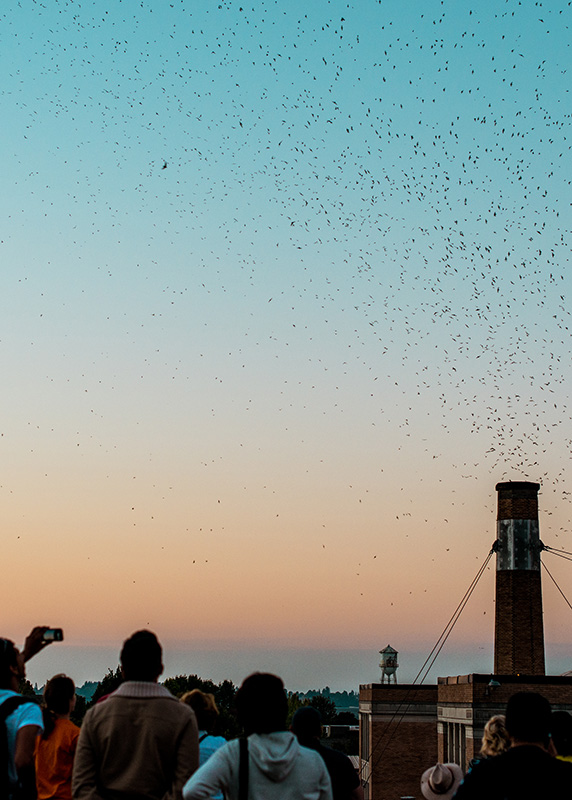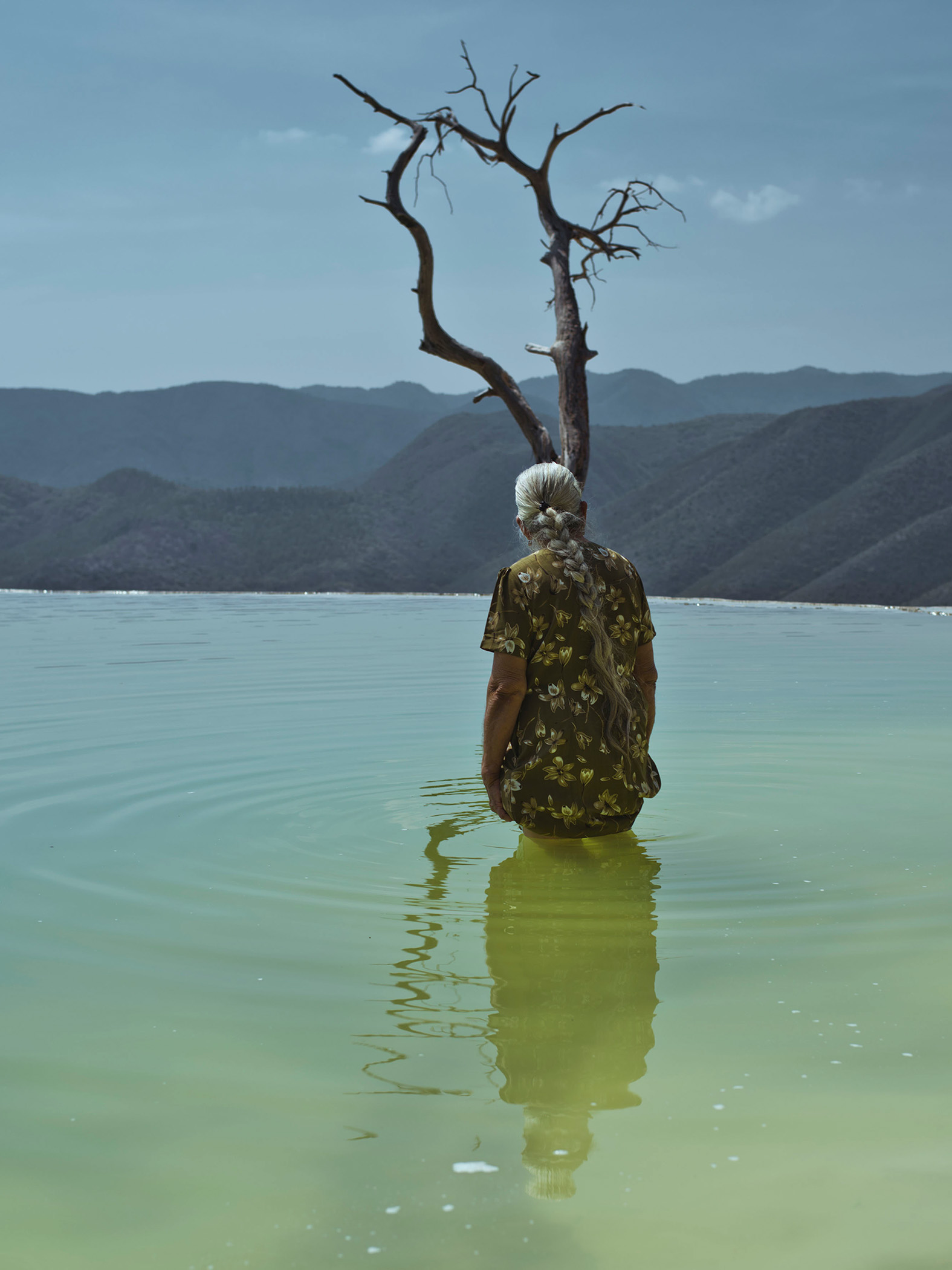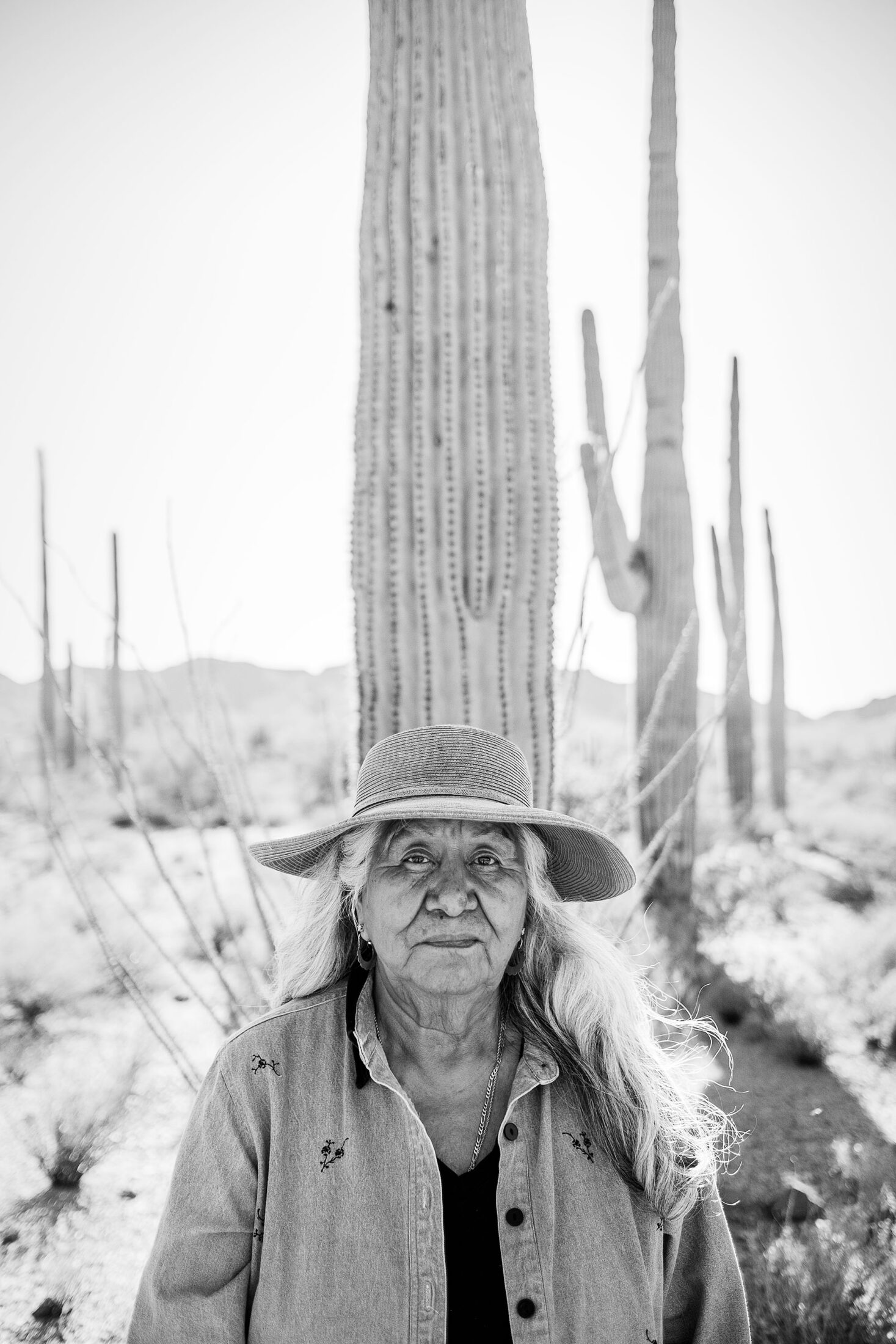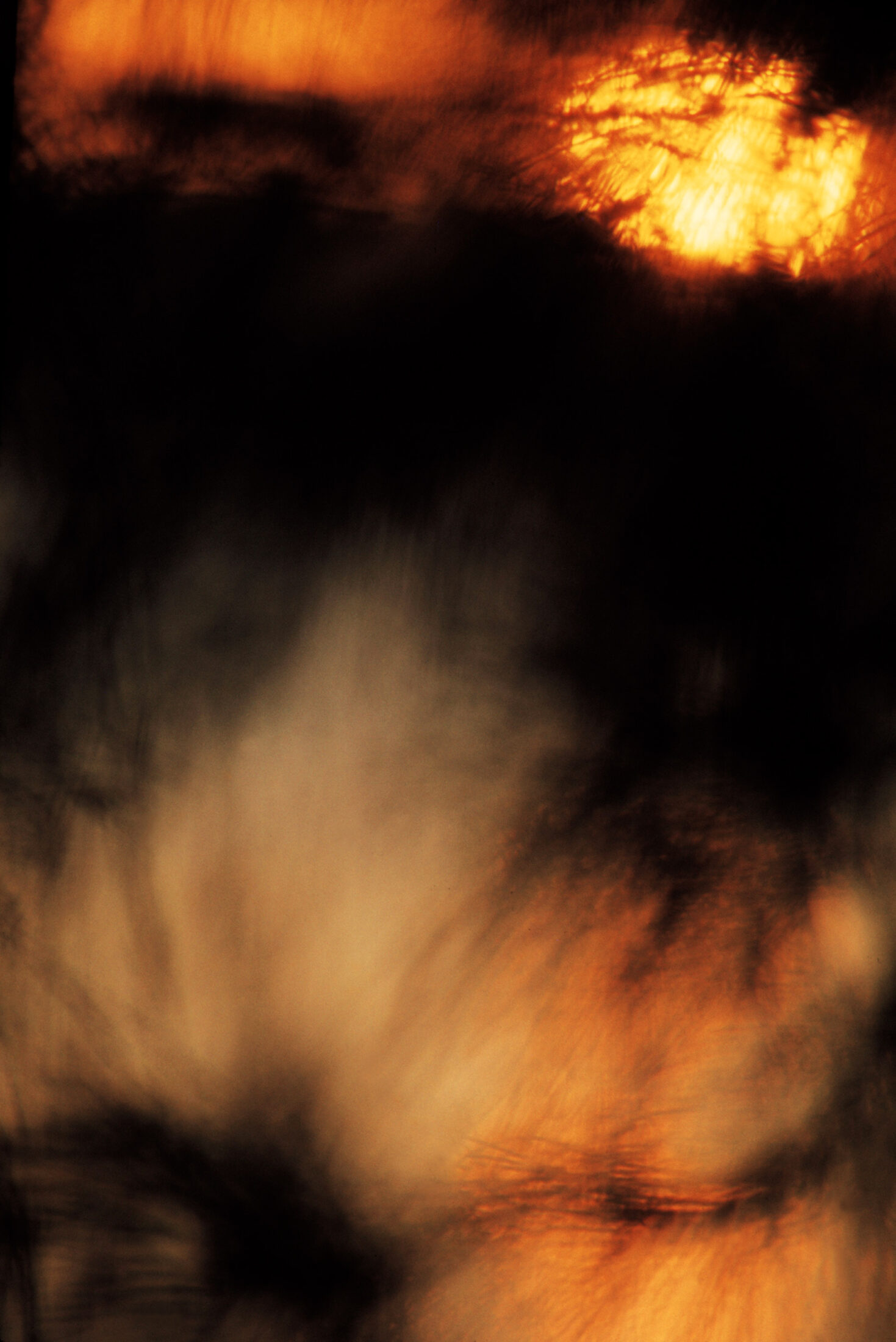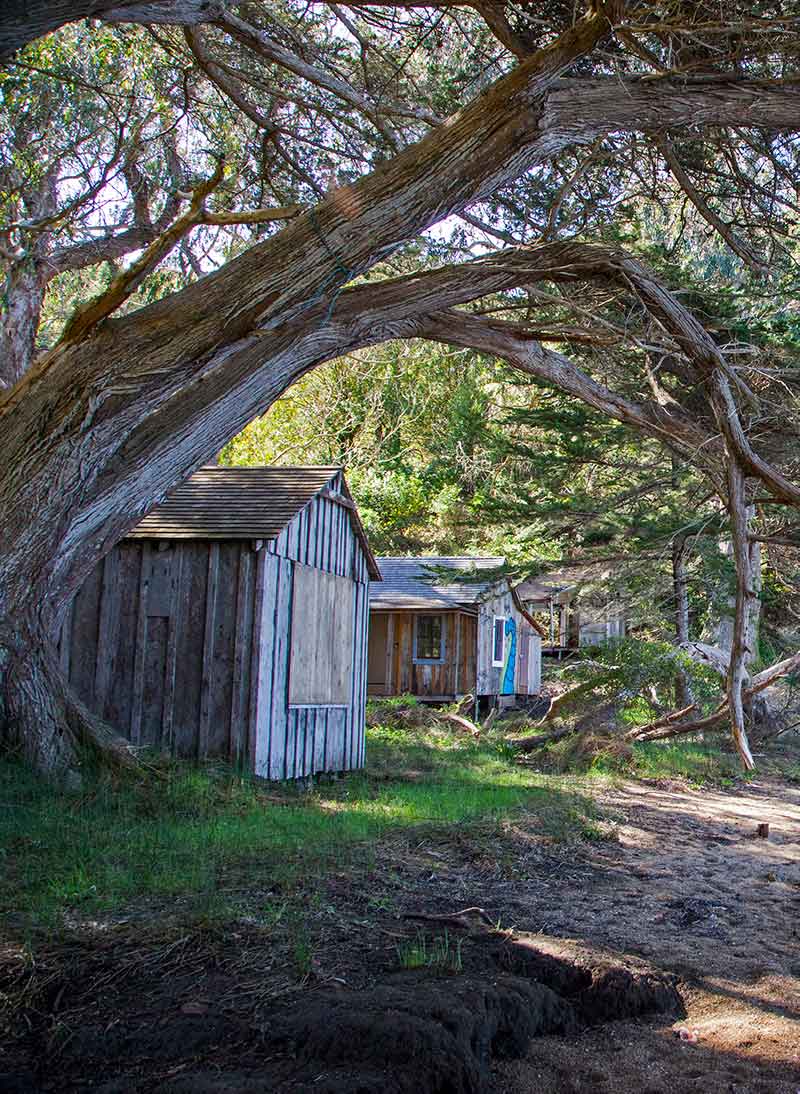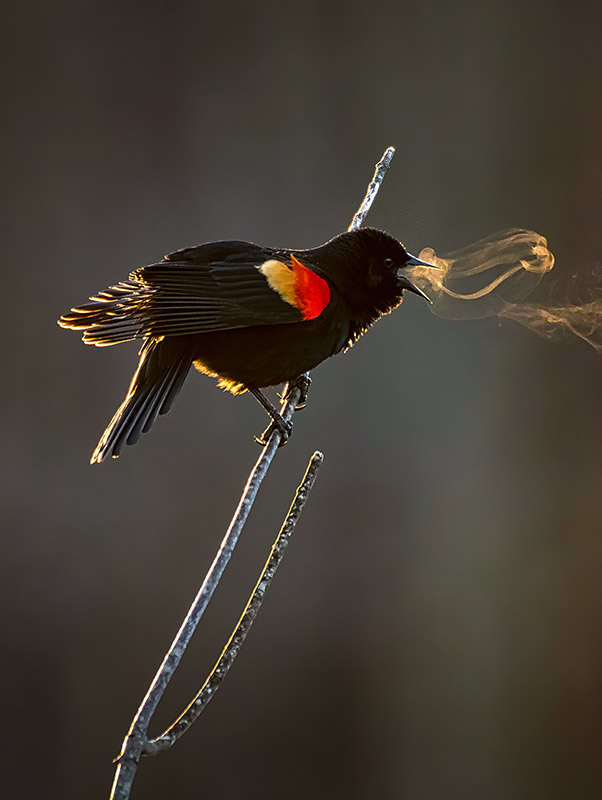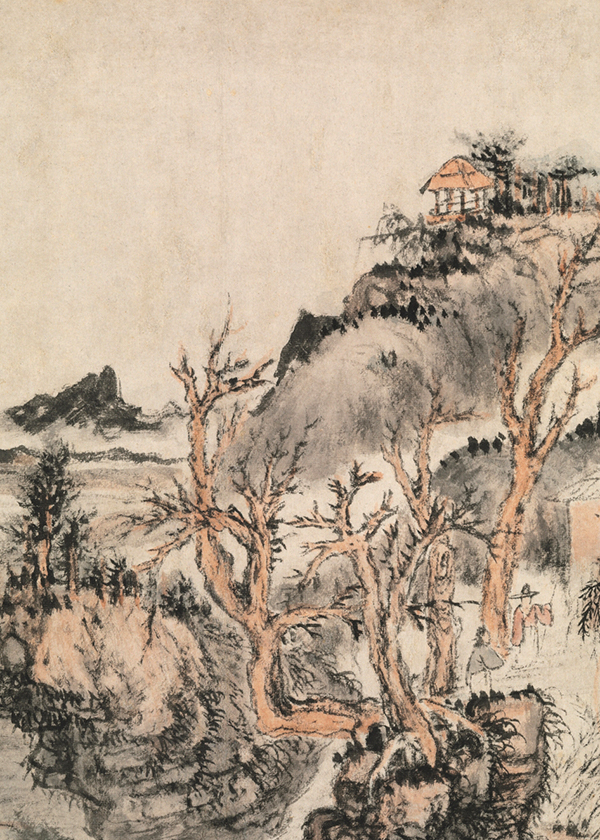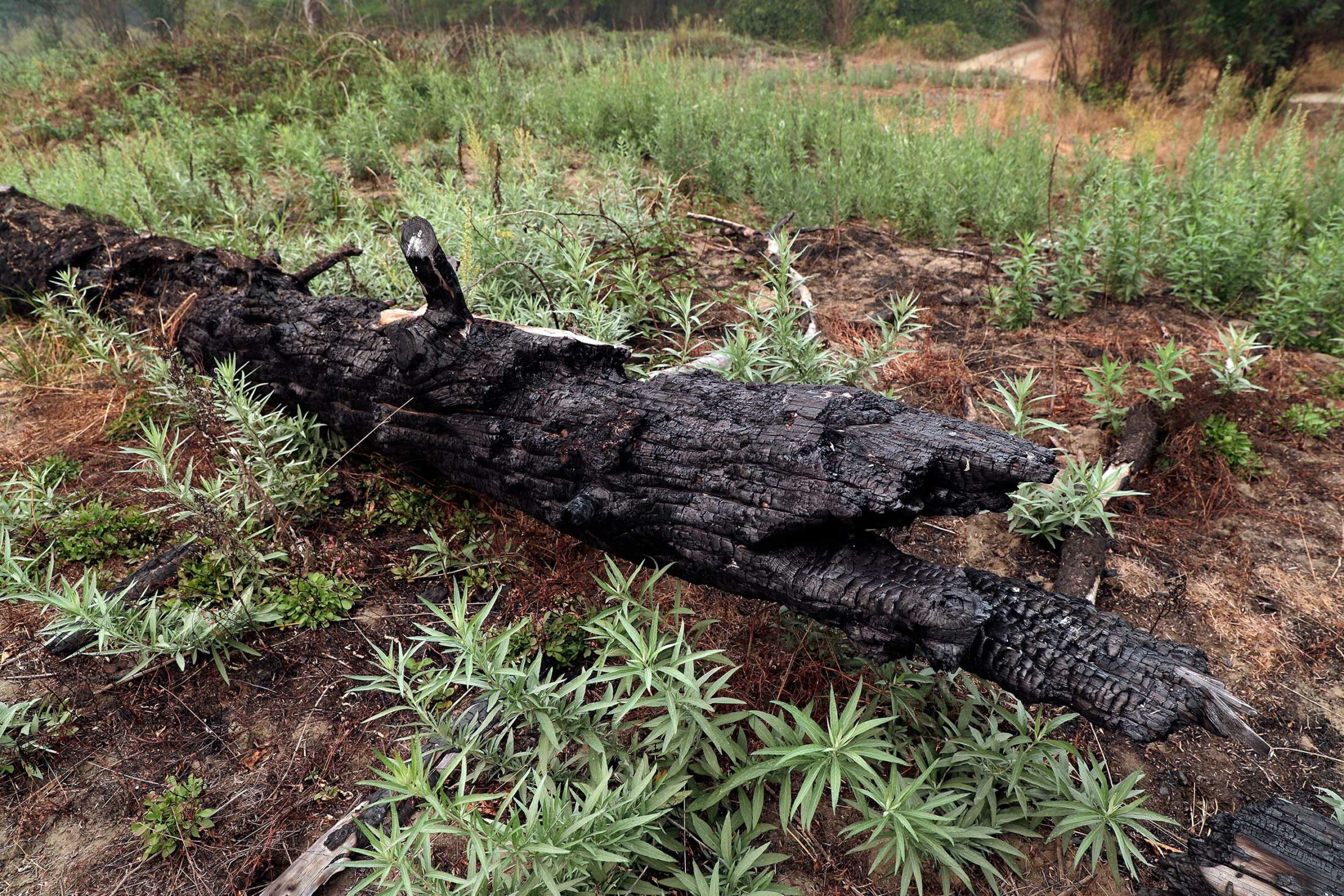
Firebreak
Chelsea Steinauer-Scudder is a writer based in northern New England whose work explores the human relationship to place. Her essays have been featured in Crannóg Magazine, Inhabiting the Anthropocene, and EcoTheo Review. Her forthcoming book is Rebirth: Mothering Through Ecological Collapse.
As Chelsea Steinauer-Scudder walks along the border of a recent prescribed fire, she wonders what acts of imagination are needed to restore the world her daughter will inherit.
Near the end of April, I’m walking with my family on the Bradbury-Pineland Corridor Trail in Pownal, Maine. It’s a gently hilly, shady loop that crosses a river and winds through a forest that hums with a chorus of birds. We always turn right at the first fork in the trail because we often see a pair of pileated woodpeckers at work in a small island of trees that intersects a wide meadow, a grassy expanse that we cross before the path winds into the forest.
The last time we were here was nearly a year ago and I was nearly full-term, our daughter kicking and turning in my belly as I panted up even the shallowest inclines. At that time, the meadow was full of shrubs and short trees, many of which had fluorescent pink flagging tied to their branches with the word invasive scribbled on it in black sharpie. The meadow had grass, too, but it was clear that the grass was losing ground.
Now, in mid-spring, our daughter is seven months old and riding in a carrier on my husband’s back, fighting the sleep that is tugging at her eyelids, insistent on taking in her new surroundings.
Those surroundings have changed rather drastically since we last saw them: all of the shrubs and trees are gone from the meadow. In their place there is a uniform layer of new, vibrantly green grass, just an inch tall, climbing up into the daylight from charred, blackened soil.
“This was a prescribed burn!” I say, excited because I’ve been researching the use of fire as a land management tool in the prairies of the Great Plains and hadn’t expected to see evidence of a controlled burn here in southern Maine. But the signs of a planned fire are all right here at my feet: the clean line of the firebreak around the perimeter of the new growth; the absence of the encroaching woody plants; the plant and leaf litter cleared from the ground; grass now blanketing every square inch.
The meadow is being returned to a meadow.
The image of all that new grass stays with me over the ensuing days, and though I want my mind to stay focused on the pollinators that will return or the redtail hawks that will circle above looking for rabbits and mice, I inevitably find it wandering to the meadow’s edge, to the firebreak: the line that has the blackened, rich soil on one side and the road, and homes, and snaking interstate on the other. That border between an act of restoration and the status quo.
A few weeks later, we attend our local city council meeting, held—like all meetings now—over Zoom. The council is considering the adoption of a tree ordinance that would largely prohibit cutting down any tree in our small city that has a diameter of ten inches or greater. My husband and his fifth-grade students have prepared a presentation for council members, having spent several months researching the benefits of trees and interviewing local conservationists and leaders—facts and testimonies which they include in a short video that they show. After their presentation, each of them takes a turn speaking during the public comment period.
One student, Miles, is having technical difficulties when it’s his turn. He looks panicked when the city manager tells him that his sound isn’t coming through. Miles holds up one finger to the camera, indicating he needs a minute. (It’s one of those gestures that when used by an adult can be obnoxious but when enacted by an eleven-year-old is completely endearing.) The councillors smile. Miles exits the frame, leaving us to view a puppy that is yawning on the couch in his living room. He returns after a few seconds, his mother’s hand in the frame for a moment, adjusting his newly fitted headset and microphone.
At the end of his short speech, he reads a haiku that he wrote:
Grab that tree seed now
Plant the seed in the moist soil
You just saved the world
A developer speaks shortly after. “Look,” he says, “I love trees.” But he goes on to outline all of the ways that this ordinance would hinder growth and progress, place an undue hardship on homeowners and businesses, and get in the way of affordable housing.
It’s an argument repeated by many callers over the next hour (though many speak in favor of the ordinance, too): “I love trees, but…”
But the burden of protecting them is too inconvenient; will result in too much lost income.
As citizen after citizen speaks, I can’t help but think how surreal it is that the fate of thousands of trees in our city is left to a bureaucratic process. I can’t help but think of the hunger that gnaws at us and increasingly clouds our vision until trees are not trees at all, but itemized components of a human landscape to be put in or taken out accordingly.
I recently learned that an estimated twenty-three acres of Maine forest is converted to other uses every day. I can’t help but think: Even if this ordinance passes, what about all the trees beyond the city limits?
My mind wanders to the forest’s edge: trees on one side, a bulldozer on the other.
This is how much of the work of conservation is done in our country: patchwork projects that restore land or maintain natural resources where such measures have been delineated and permitted. A municipality can save some of its larger trees within the bounds of the city. A controlled burn can restore a few acres of grass. Our society can curb its hunger in bite-size pieces—protecting some woodlands, some waterways, some wetlands—as long as much of the rest remains available for our use. Conservation is the exception, not the rule.
I want to see new rules enacted in the world my daughter will inherit. I often feel at a loss for how to do this; this often leads to despair.
Miles says something else in his comments that stays with me, that stuns me:
Trees are the flowing balance of life on this inhabited spherical ecosystem in the midst of the universe. Knowing this, I’d want to propose a tree ordinance on the world so that, many millennia from when I pass, people are still living and enjoying the shade that the trees give.
Hearing this, my mind wanders to its own edge. I come up against the limits in my imagination that have been constructed through conditioning. I come to the border between the present and a future that I can’t conceive of. I come to the darkness that is arriving in our wake, that is already here.
I peer over that edge, and I’m surprised to hear my daughter’s voice and Miles’s voice and surprised to find that something like trust, something like love, flickers there in the dark.
The grassland ecosystems of the Great Plains evolved with—depended upon—fire. Prairies are wildernesses that would not exist without fire’s powerful disturbance.
Here’s what I love about wildfire: over the last eleven thousand years, some of the prairie fires were started by lightning, but many more were started intentionally by Indigenous people who understood fire’s regenerative power on the landscape. Without this human participation, the prairies would have been crowded out by trees; they would have ceased to exist, and all of their biodiversity would have vanished with them.
This fact counters a definition of wilderness that is still stubbornly rooted in our consciousness: that wilderness is only pristine when humans are absent. Prairies are wildernesses that depend upon human participation. Even now, with 96 percent of the tallgrass prairie lost to the plow, the small fraction that still exists relies on human intervention. When the relationship between human and grassland is well understood, humans become agents of biodiversity: we become wilderness.
Here we come to another edge, another boundary: when wielded with understanding, fire is restorative; when misunderstood and misapplied, fire is monstrous. In California, where most ecosystems are fire-adapted, the widespread suppression of fire from the landscape—even the suppression of prescribed burnings set with an understanding of conditions, seasons, and timing—has meant that when fires start, they rage. They spin out of control, consuming everything in their path: trees, homes, lives, entire communities.
There are no clean edges to such wildfires, no firebreaks—just smoke, loss, fear.
I think what has stayed with me about what Miles said is that it invites us into a space that is both narrowly delineated and utterly grand: engage in the simple act of planting a tree; allow yourself to imagine that a thousand years from now one of your descendants will pause under the shade of a descendant of that tree.
Many would likely call this too naive.
I’m inclined to think that what is naive is thinking that we could ever do anything other than this; thinking that it is enough to permit conservation and restoration only to the extent that it allows us to maintain our lifestyles; thinking that we can always turn a blind eye to the harm those lifestyles inflict on human and nonhuman communities.
Grab that tree seed now.
May those trees thrive.
May those restorative fires burn.
May we learn to see and grow beyond our edges.
